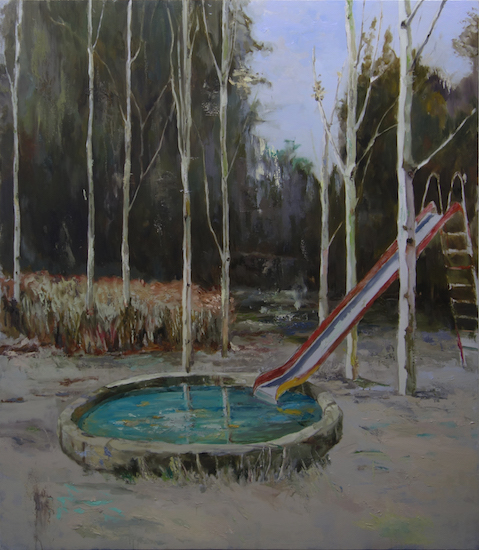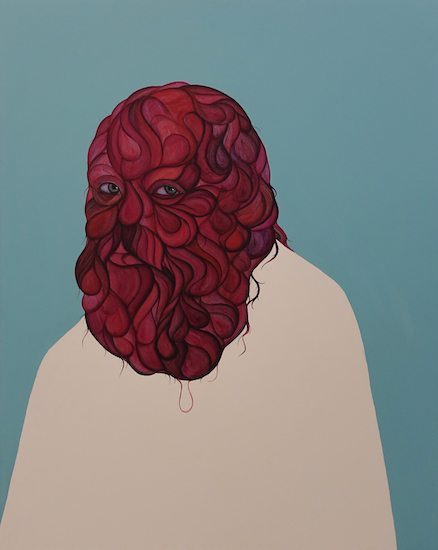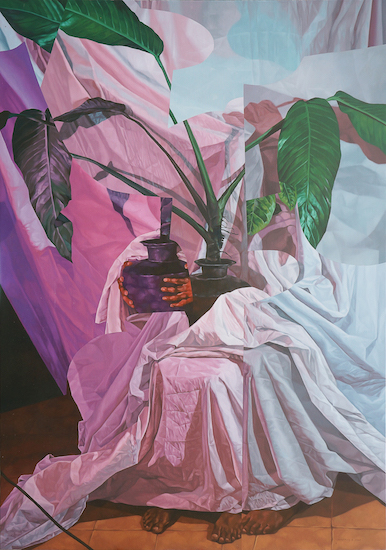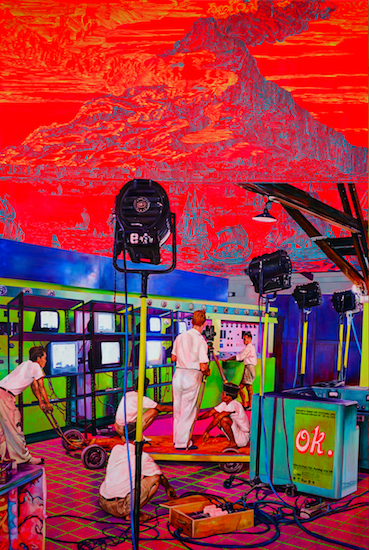Yavuz Gallery Singapore is pleased to present Zico Albaiquni, Lec Cruz, Julius Redillas, Wedhar Riyadi and Geremy Samala in Lines of Dissonance.
Forming an ensemble that looks into the different forms of disruption and discord, the works of five artists from Indonesia and the Philippines confront disturbances marred with the influence of colonisation, history, technology, art production, and the pandemic. Lines of Dissonance reflects on these interventions and the transformations embedded in our realities. Here, images are charged with narratives that represent and critique our understanding of the world and the way we navigate it.
The ecstatic outpouring of physical energy from action painting dominates the works of Geremy Samala (b. 1994, Philippines). His works collide with abstraction techniques that use materials such as grids and stencils in plotting fragments of universal elements such as time, space, and illusion in an otherwise flat surface. Samala’s visual intervention produces a visual discourse on image production, where the artist’s disposition becomes the force that arbitrates between the physical and the mental tasks involved in art-making.
The vague and undetermined weight of documenting history is at the center of Julius Redillas’ (b. 1984, Philippines) “Archive” series. Drawn from portraits found in a museum’s archives, Redillas disturbs these images from their dusty chambers to his portrayal of their anonymity. Hence, the participation of these elements from history is morphed into contemporary contexts that consider their bearings today.
Meanwhile, the somber and melancholic mood in Lec Cruz’s (b. 1982, Philippines) “Hide and Seek” series illustrates the bizarre normalcy we are all forced to face. Slowly treading through a period interrupted by the pandemic, Cruz draws from the obligatory isolation and solitude while moving forward to live in the present. In one of the works, a playground slide that leads to a well is seen in the middle of a desolate forest while in another painting, workers garbed in full protective suits are hauling an unknown object from the ground. These depictions bring to the fore the unpredictability and the void that we carry on with us as we survive these unprecedented times.
Wedhar Riyadi’s (b. 1980, Indonesia) Still & Life examines the revolutionary impact of technology on human behaviour. In his work, a human figure is burrowed underneath a pile of blankets where only the hands and feet are visible. A plant with its leaves extending towards the edge of the canvas seems to confuse our preconceived notions of the human form. The artist’s interpretation challenges the way our minds connect with images similarly how technology had reconstructed our reality into parallel formats: the physical and the virtual. The artist argues that the simultaneous interaction between us and the flat screens pushes us to present ourselves in our best interests and also urges us to expect a public response. Thus, a performative engagement where genuine feelings and connections are lost.
The intersection of art history, colonisation, and new media pivots Zico Albaiquni’s (b. 1987, Indonesia) latest work, To Navigate and to be a Pirate in the Cost to be in the Frame of the Scene. In a recent dialogue with the art collective Tromarama, Albaiquni is reminded of the invisible but seemingly powerful influence of the canon in art history. In his work, Albaiquni highlights the constant rebellious attempts to change such paradigms through the lens of historical references to naval wayfinding and piracy. In one, Albaiquni looks at the 2003 OK. Video Festival (Indonesia) and the discourse in video art surrounding the development of online piracy at the turn of the millennium. In another, Albaiquni dissects photographs by Charles Breijer, and its depictions of Indonesian natives behind the scenes of local film sets, who were always out of the frame and never at the forefront in colonial productions about and on the country. Independent and far from the canon, the references that Albaiquni presents demonstrate self-liberation from what hegemonic art structures dictates. Access to archive material tells a different story and levels the field by capturing the other settings and presenting a broader perspective that challenges our understanding of history.
The fast-paced shifts in today’s world are inevitably attached to our consciousness as we continue to learn and re-learn interpretations of our environment. Lines of Dissonance paves a path reckoning the steps we must bear when accompanied with the ruminations of the past, the present, and the future.
_________
Text by Gwen Bautista.




